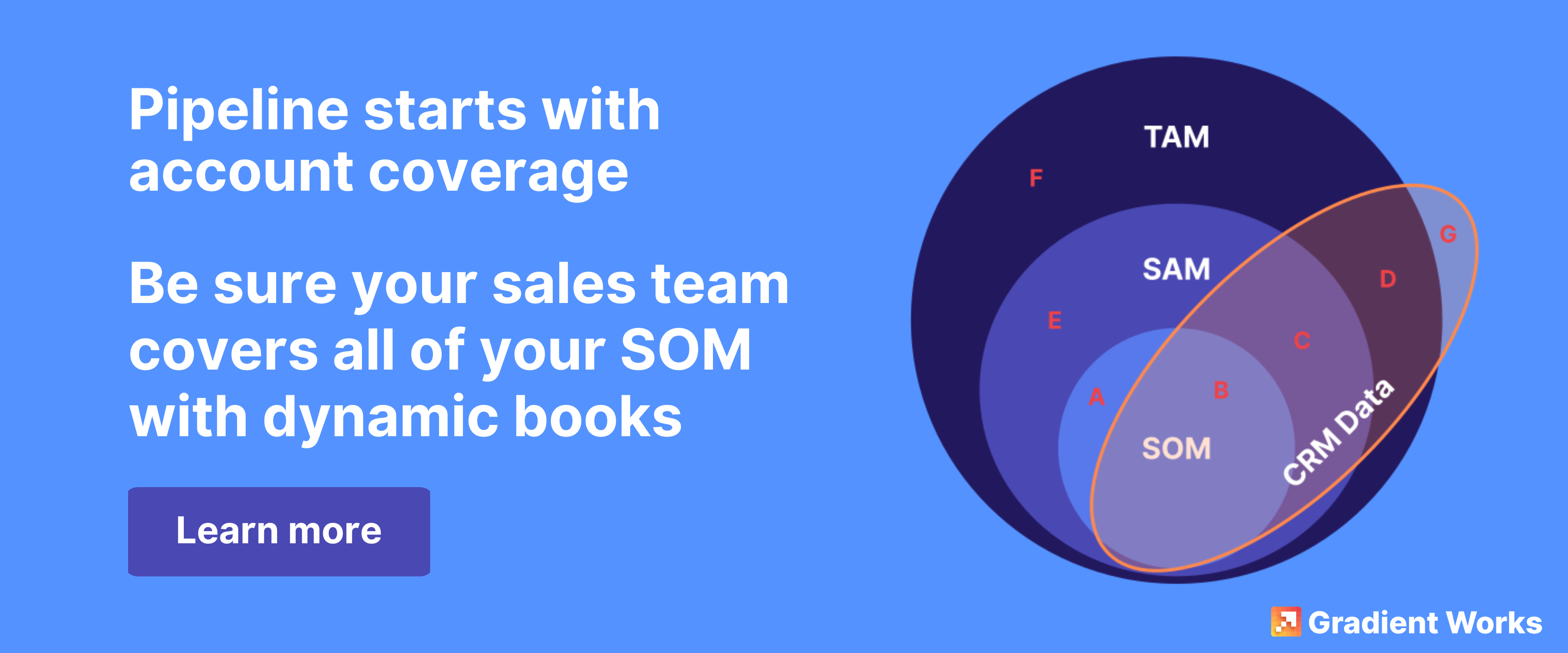What makes a successful CRM implementation? What does a CRO need to be thinking about when it comes to Salesforce?
Recently, we sat down with Stan Coville from CapTech Consulting to talk all about Salesforce. Stan, along with Gradient Works co-founder Hayes Davis, discussed everything from upcoming Salesforce features, using Flow, Salesforce team design, and so much more. You can watch the full conversation on our YouTube channel. Here in this post, we’re going to dig into the parts of the conversation that focused on what goes into a successful CRM - specifically Salesforce - implementation.
Implementing Salesforce is a big commitment (time, money, people) for any company. But when a CRM implementation is executed thoughtfully, it can be a tremendous advantage to an organization well beyond the sales team.
A company’s CRO spends a lot of time thinking about how to save their salespeople time, how to make them more efficient, and ensure they're focusing on the right things. The right CRM implementation can help with all of that. Intelligent Salesforce automation can take advantage of all that the Salesforce platform provides, so the sales team can be more efficient and focus on the things that matter (the things that only a person can do). Ultimately, that means selling in the most intelligent ways by collecting the right intel, targeting the right prospects, and using the available data and automation to be as efficient as possible.
Salesforce can provide a 360-degree view of the customer, which includes using sales, service, and marketing functionality to get a complete picture of the customer and their interactions with your company. This allows the sales team to focus on the customer relationship.
Where does Salesforce begin and your other applications begin? It’s important to consider what your enterprise data structure looks like, and how Salesforce fits into that (and ideally augments it). Salesforce is often the system of record for a company’s customers and contacts, but Salesforce can also become an intelligent data hub for even more of your organization. Salesforce can encompass a lot of tangential business processes alongside that core sales and service cloud functionality. You can use out-of-the-box APIs and existing middleware to connect to Salesforce to enhance data you can use across your organization.
Who owns your Salesforce implementation? Who are your key Salesforce stakeholders? If your Salesforce implementation is driven by someone who isn’t truly connected to the way that sellers actually sell within your organization, then you’re unlikely to be successful long-term. Sellers are ultimately the main consumers of a company’s CRM product, so the Salesforce product owner needs to be in regular touch with them. The Salesforce owner needs to understand the sales process well and be willing to be hands on with sellers, to understand how they live and work every day.
But organizations that are built around a CRM don't just have the sales organization as a stakeholder; they have other parts of the organization as well. How do you structure your Salesforce team so that it integrates well with the other parts of the business that you might not traditionally associate with Salesforce? Salesforce can provide an avenue for data enrichment when integrated into larger enterprise business processes, IT processes, and data structures.
How can you make your Salesforce data extensible so it can help power business intelligence across your organization, and vice versa? Incorporate activities from your service cloud or integrate data from live chat functionality to gather feedback. Think about how to integrate product metrics into Salesforce.
For example, in B2B organizations that are trying to move to a more product-led growth model, they find that their Salesforce is integrated with all their business systems, but isn't always integrated directly with their products. That leads to a gap with product metrics and other important data they could be surfacing to their sales team.
To be more successful, connect product metrics into Salesforce to give sales teams a true 360-degree view of the customer. Per-user product usage metrics connected to Salesforce contacts, let salespeople who are selling to these contacts understand how much the customer uses the system, how many support cases they have raised, and what issues they might be having that need to be addressed in the sales process.
In addition, the product team can gather data from sales about closed lost metrics, the parts of product demos that don’t resonate with prospects, and more.
Once you have a complete 360-degree view of the customer - whether that's within Salesforce itself or through a combination of Salesforce and other tools - you can surface that data in a dashboard or other data visualization tool for all your different stakeholders.
As Stan says, “I would call it a mindset shift - from a vertical mindset, where we think about all the hierarchies of people, to more of a horizontal approach, where we ensure that all the different parts of the organization are really aligned. It goes back to that discipline of creating a culture where alignment is important and then practicing it every day so it goes well beyond Salesforce specifically, because Salesforce lives at the nexus of so many different pieces across the customer life cycle.”
Watch the full video with Stan on the Gradient Works YouTube channel.





